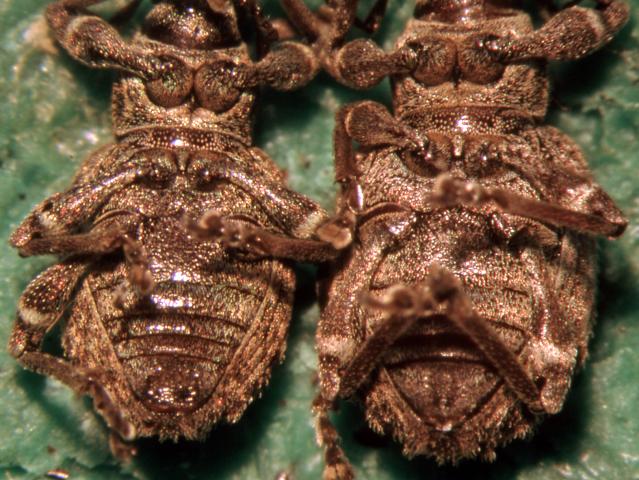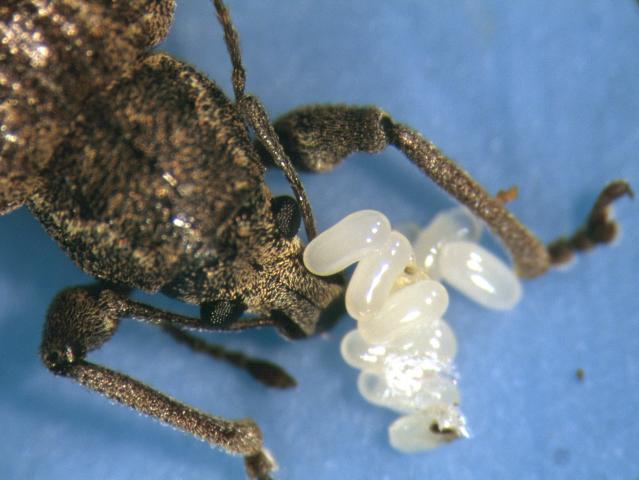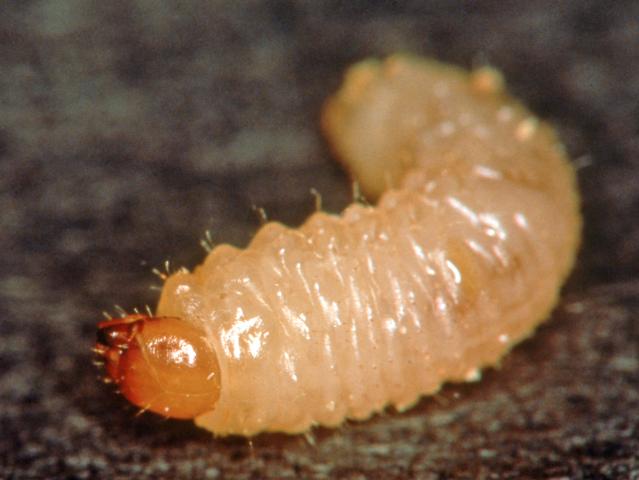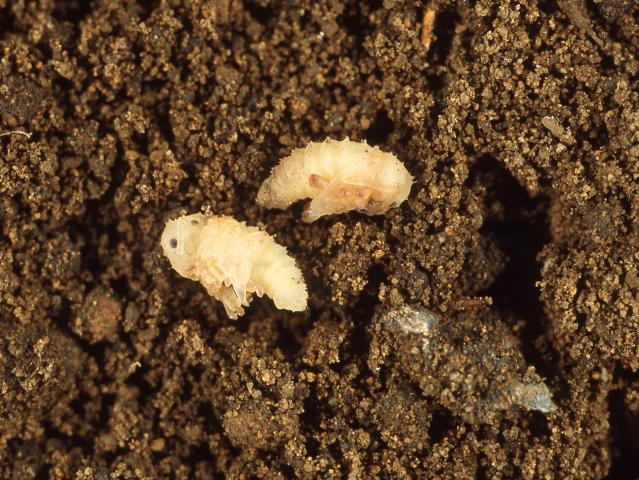Description and life cycle
The garden weevil, Phlyctinus callosus, was accidentally introduced to Australia from South Africa where it is known as the banded fruit weevil.
Garden weevil eggs are laid in groups in loose organic matter on the soil or inserted into hollows in plant debris. Eggs are capsule shaped, small and almost impossible to find in the field. They hatch in 10 to 14 days.
Larvae of garden weevil are soil-dwelling, legless and have brown heads. After hatching, larvae immediately burrow into soil and feed on plant roots.
They are difficult to distinguish from other brown-headed larvae - apple weevil (Otiorhynchus cribricollis), spotted vegetable weevil (Desiantha diversipes), and sitona weevil (Sitona discoideus). But they can be distinguished from the white-headed weevil larvae of Fuller's rose weevil (Asynonychus cervinus) and whitefringed weevil (Naupactus leucoloma) and leaf feeding larvae of vegetable weevil (Listroderes obliquus). Presence of the more easily identified adult stage of weevils is a good guide to the species of larvae in vineyards or any horticultural crop where weevils are a pest. To distinguish between larvae of garden weevil and these other species, refer to the Department of Primary Industries and Regional Development information page Identifying soil beetle pests.
Larvae develop slowly during winter and more rapidly as soil temperature increases in spring. Initially they are off-white, and become milky as they mature and form a smooth-sided earthen cell in the soil in which they pupate.
Pupae are a delicate, soft-bodied stage and most abundant in September. They are white at first, and then darken. The duration of the pupal stage depends on weather conditions but it is usually completed in three to four weeks. The eyes become black and the body turns grey-brown just before they emerge as adults.

Adult garden weevils are grey-brown, about 7 millimetres long, and are flightless. They have a bulbous abdomen with a prominent pale white V stripe across the end of the abdomen. The tip of the abdomen in female weevils is pointed while that of males has a tuft of hairs and is more squared off .
The adult is similar in appearance to apple weevil, Fuller's rose weevil and vegetable weevil. Another weevil that may be found occasionally in vineyards is whitefringed weevil. To distinguish between adults of garden weevil and these other species, refer to the Department of Primary Industries and Regional Development information page Identifying soil beetle pests.
Adult weevils emerge from the soil in mid to late October and are most numerous during November and early December. Many adults survive until April with some present through winter.
As the weevils are most abundant in spring, they appear to only have one generation each year. However, in some situations there may be two generations.



